Sheep Laurel
Kalmia angustifolia
A small evergreen shrub of northeastern North America,
sheep laurel is so common and abundant in wetlands that if often "overflows"
to the neighboring upland forests, as it happens in Alper Preserve. In the shaded, dry habitats, however,
it leads a miserable life, as compared to its life in an open wetland, occurring in small clumps,
flowering only very sparingly, and never producing dense capsule clusters.
To observe its spectacular flowering and intense fruiting, one has to descend to
a pond margin or an open, flat frost bottom. Clusters of pink flowers develop on top of the overwintered shoots,
new growth then appearing as a green crown on top of each flower cluster.
The unusual structure of laurel flowers has fascinated people since olden times.
Each petal has a pouch in which the anther (i.e., sack containing pollen) of
a corresponding stamen is retained under tension until the time the flower
is visited by a pollinating bumblebee. Due to mechanical impact, the anther is
then snapped out of its pocket, dusting the insect with pollen.
The common name "sheep laurel" sounds ironic, as the plant is poisonous to sheep,
other cattle, and probably to humans. Growers of commercial blueberries dislike
this plant as a common and difficult weed on their plantations.
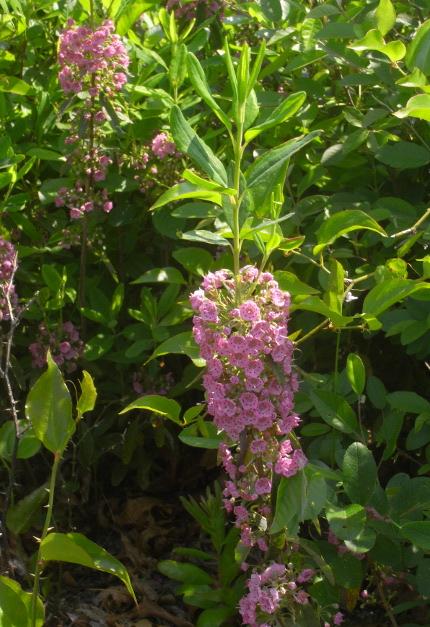
May 28, Massasoit Wildlife Refuge, Plymouth
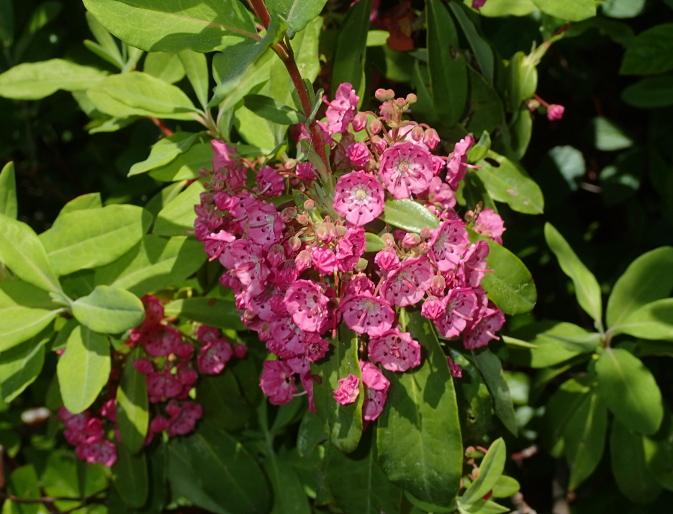
June 17, Whites Pond, Plymouth
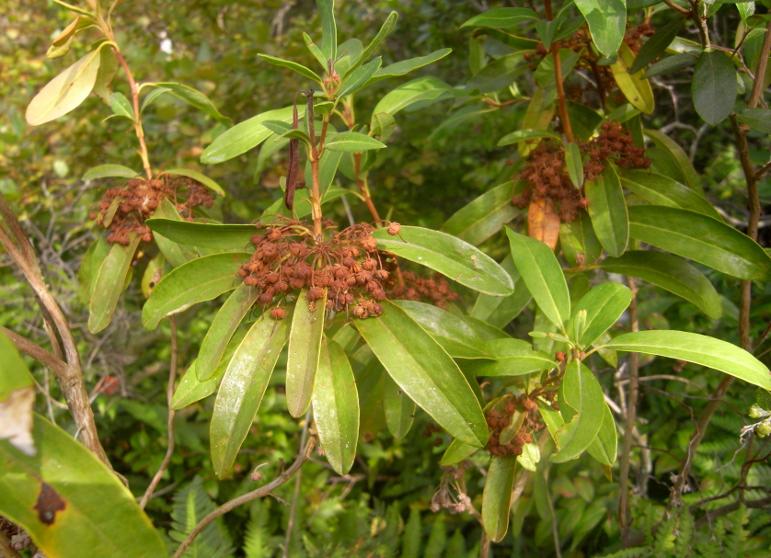
September 24, Nunkatessett Pond, Bridgewater
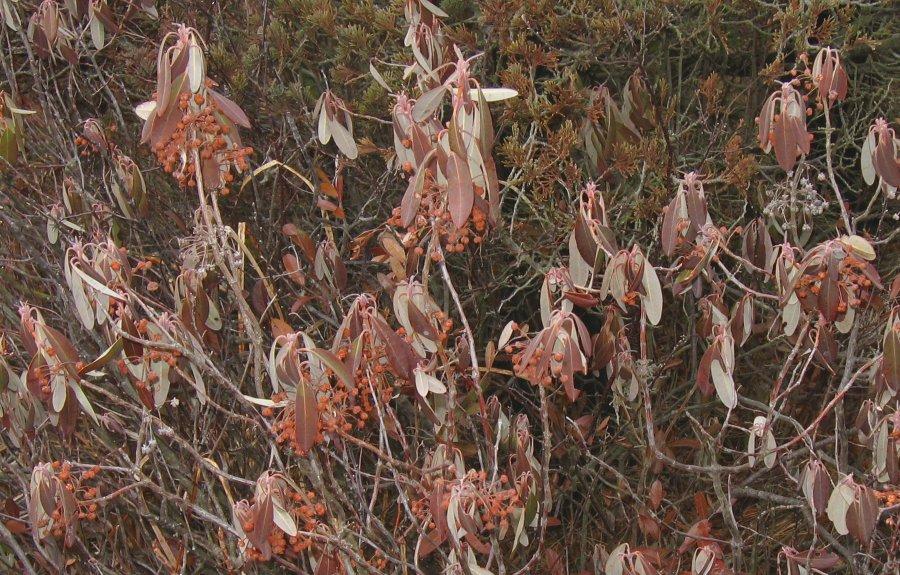
Foliage may attain bronze winter color. February 4, Ponkapoag Bog, BHR, Canton
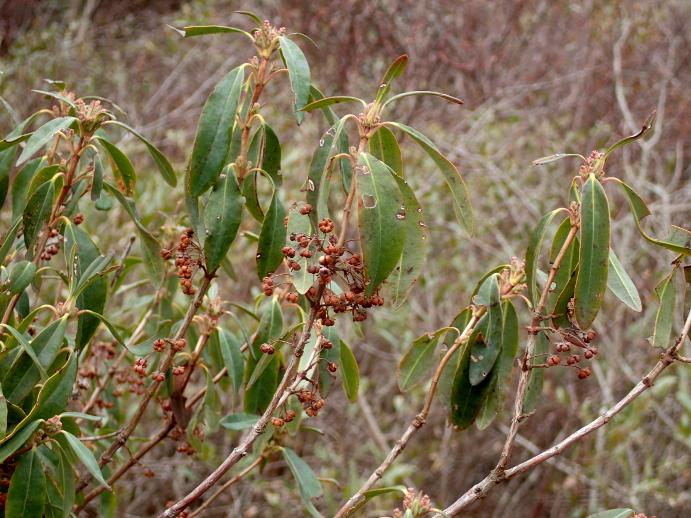
Leaves after overwintering and previous year's capsules. May 1, Plymouth